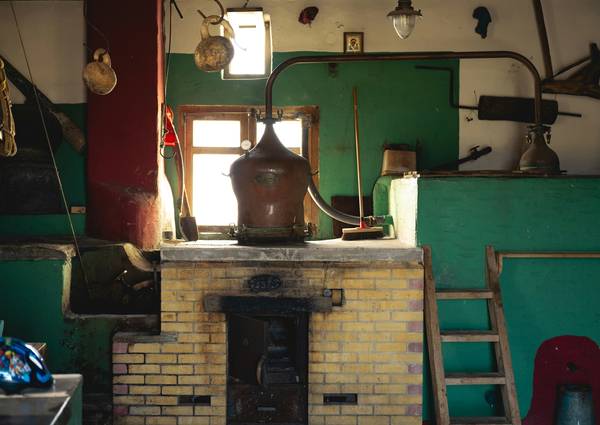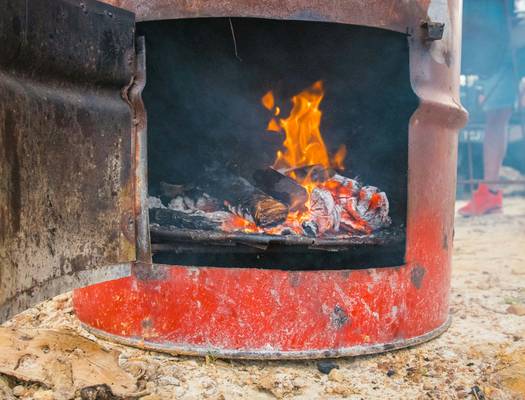
Why Stove Ventilation Matters
- Safety: Proper venting prevents smoke, carbon monoxide, and dangerous gases from accumulating in your home.
- Efficiency: Good draft ensures your stove burns cleanly and produces maximum heat.
- Code Compliance: Local codes require specific venting for different stove types and fuels—avoid insurance and legal issues.
- Air Quality: Properly vented stoves protect your indoor air and help maintain healthy humidity and oxygen levels.
Types of Stove Ventilation Systems
Chimney Venting
- Used for wood and coal stoves
- Masonry or prefabricated (Class A) chimneys
- Relies on natural draft (hot air rising) to exhaust smoke and gases
- Must extend above roofline and meet code requirements
Direct Vent
- Common for gas and pellet stoves
- Sealed system—draws air from outside, exhausts through a double-walled pipe
- Often vents horizontally through an exterior wall
- Very efficient and safe; minimizes indoor air impact
Vent-Free / Ventless
- Some gas and electric stoves are ventless
- All heat and combustion products stay in the room
- Strictly regulated due to air quality concerns
- Not allowed in many regions; always check local codes
Power Vent / Forced Exhaust
- Used in some pellet and gas stoves
- Electric fan assists with venting, allowing longer or horizontal vent runs
- Requires electricity—does not work during outages unless backup is present
Venting Requirements by Stove Type
Wood Stoves
- Must be vented through a dedicated chimney—masonry or UL-listed Class A steel
- Chimney must be tall enough to ensure strong draft (typically 15+ feet)
- All connections (stovepipe, thimble, chimney cap) must be sealed and code-compliant
- Annual cleaning and inspection required to prevent creosote fires
Pellet Stoves
- Use Type L vent pipe (smaller diameter, double-walled, rated for pellet exhaust)
- Can be vented horizontally through a wall or vertically through a roof
- Requires sealed joints and a termination cap outside
- Fan-assisted exhaust—relies on electricity
Gas Stoves
- Direct vent stoves use concentric (coaxial) pipe—draws in outside air, vents exhaust outdoors
- Vent-free models allowed only in some areas—strict size and air quality limits apply
- Never vent gas stoves into a wood stove or fireplace chimney unless specifically rated for such use
Electric Stoves
- Do not require venting—zero emissions
- Place in a well-ventilated room for best comfort
Coal Stoves
- Require a dedicated chimney (masonry or steel) rated for coal—coal exhaust is highly corrosive
- Never share a chimney with other appliances (furnace, water heater, etc.)
- Regular cleaning required—coal ash and soot build up quickly
Key Elements of a Safe Venting System
- Chimney Height: Must meet minimum height above roof to create adequate draft
- Clearances: All vent pipes and chimneys must have specified distance from combustibles (walls, ceilings, roof)
- Sealed Joints: Use only approved connectors and sealants—no leaks or gaps allowed
- Termination Cap: Keeps rain, debris, and animals out of the vent/chimney
- Backdraft Prevention: Proper draft and negative pressure balance prevent smoke or gases from entering the home

Signs of Ventilation Problems
- Smoke or odor inside the house when stove is in use
- Backdrafts or cold air entering through the stove
- Poor draft (weak fire, difficulty lighting)
- Excessive soot or creosote buildup
- Moisture stains or corrosion around venting pipes
- Persistent carbon monoxide alarms
Tip: Address these issues immediately—ventilation problems can be life-threatening!
Common IssuesVentilation & Air Quality: What to Know
- Install carbon monoxide (CO) detectors on every floor, especially near sleeping areas and the stove room
- Do not block air inlets, vents, or chimneys—stoves need fresh air for safe combustion
- In airtight homes, crack a window when lighting solid fuel stoves to improve draft
- Follow manufacturer and local code recommendations for minimum room size and air exchange rates
- Avoid venting stoves into unlined, damaged, or shared chimneys
Venting Codes, Permits & Professional Inspections
- Most jurisdictions require permits and inspections for new stove installations or venting modifications
- Code requirements vary by fuel type, stove model, and home construction—always check before starting
- Professional installation is strongly recommended for gas, pellet, and coal stoves
- Schedule annual chimney or vent inspection and cleaning—more often if burning wood or coal daily
- Keep documentation of venting system (photos, manuals, permits) for insurance and resale
Frequently Asked Questions: Stove Ventilation
- Can I use an existing fireplace chimney for a new stove? Sometimes—chimney must be lined, in good condition, and code-approved for your stove and fuel.
- Is vent-free safe? Only if allowed by code, sized to your room, and used as directed. Always install CO detectors and provide extra ventilation.
- Do I need to clean my vent pipe if I burn pellets? Yes! Pellet venting accumulates ash and must be cleaned at least once per year.
- How do I know if my venting is working properly? Signs include strong draft, no smoke/odor indoors, and no creosote or moisture at vent outlets. Have a pro inspect if unsure.
- Can I vent multiple stoves into one chimney? No—each stove/appliance needs a dedicated flue to prevent dangerous backdrafts and code violations.
Related Guides
Stove Installation Guide
Step-by-step instructions for safe, code-compliant stove and venting installations.
Installation GuideStove Safety Tips
Essential safety practices for every stove type—venting, alarms, maintenance, and more.
Safety TipsStove Maintenance Guide
Keep your stove and venting system safe and efficient with our expert maintenance routines.
Maintenance Guide